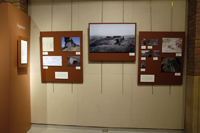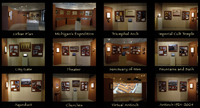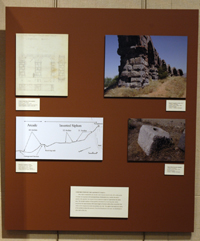
Duderstadt Gallery: Section 9 - Aqueduct
The most completely preserved part of Antioch’s hydraulic system is the first known and most visible of the city’s two aqueducts, which was probably built in the early 1st century AD, soon after the foundation of the colony. The flowing waters of Antioch’s aqueducts enabled the development of an urban culture in the Roman mold complete with nymphaea, fountains, baths, and a sanitation system. The water of the river Anthius and rainwater stored in cisterns and wells could have supplied the essentials of life, but only the flowing water of the aqueducts asserted the affluence of a city able to expend significant resources over a long period of time for what was, in effect, a luxury product. Antioch’s Sanctuary of the Imperial Cult, with its Latin copy of Augustus’s autobiography (the Res Gestae) displayed on the gateway shaped as a triumphal arch, as well as its monumental Hadrianic City Gate, validated Antioch and its citizens as Roman. Such markers of “Romanness” offered advantages in the intense, ongoing social and political competition among Antioch’s wealthy citizens and, more broadly, among the cities of the region and wider empire. The conspicuous use of aqueduct water also staked a rhetorical claim to Antioch’s close relation to its mother city, Rome.



